Features
Interview with Bassist Mick Mahan, “No Excuses”
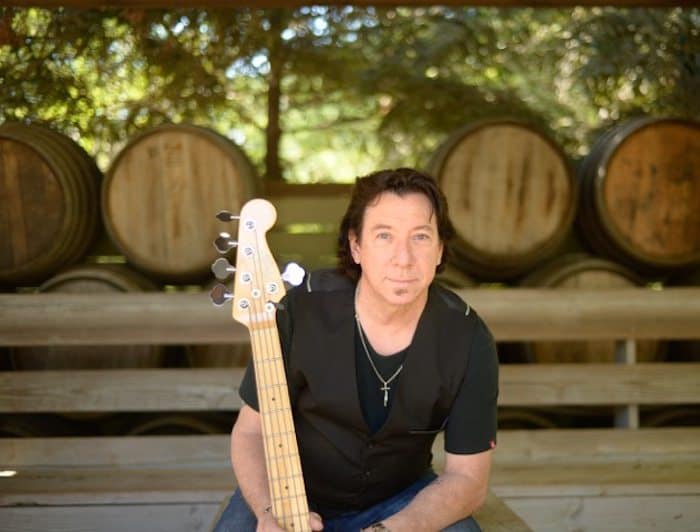

Photo, Meghan Gaucher
Interview with Bassist Mick Mahan, “No Excuses”…
How did you get started playing bass to where you are today?
At a really early age, around the age of four, I was paying attention to music and was able to recognize the feelings and emotions it could evoke. That’s what music is all about… a gift that can make you happy, or give you any number of different emotions and feelings. A song that had a big impact on me was Del Shannon’s “Runaway”. It’s a minor-ish kind of song, has a great vibe and it’s an emotional piece. That really struck a chord with me and I became interested in the effect music had on other people and what it would be like to do that kind of artistry. Once the Beatles hit, that was it, I was done. Everyone in the audience was crying, screaming and going crazy. Each of the guys had such a strong personality. They had their own thing and each was definitive. From that point on, I wanted to play guitar.

Photo, Meghan Gaucher
My Uncle Eddie had a country vibe, did a lot of Hank Williams songs and stuff like that. He would sit in the living room and sing and play on an old Gibson single cutaway guitar. I was young and it was the first time I had seen anyone performing live. It was so amazing and so cool to me. I didn’t have a guitar so he gave me his Gibson until I could buy my own guitar. It was a Vox Ace, sort of a Strat knock-off and it had three pickups on it. I think I probably paid two hundred dollars for it at Dusi Music, a local store. Years later when I met Chuck Rainey, he told me he bought his first bass at that same music store. Chuck Rainey is a bass hero to everyone, but particularly to me because we’re from the same side of our hometown. We have a lot of the same influences and I consider him a kindred spirit.
After I bought the Vox, I got in a band called the Illusions with guys older than I was. We started playing dances and private parties, and I made a little bit of money. Shortly before I got into high school, the band I was playing in lost our bass player and I ended up doing it because… well, somebody had to do it. I borrowed a bass from a friend and bought records, 45’s, to learn the bass lines. It was right around the time Led Zeppelin arrived on the scene and John Paul Jones was a highly influential bass player for me. What he was doing at the time was sort of a fusion of R&B, true R&B like James Jamerson, mixed in with a rock player. Bass lines like “Ramble On”, that’s like a Jamerson bass line. I had no formal education it was all learning by ear and emulating as closely as possible. When you learn bass lines, they’re so much about the feel. You can learn HOW to play the bass lines, but trying to get the FEEL of that into your playing, is a whole other thing. Winter in Ohio has pretty foul weather, and it lent itself to staying indoors a lot. It was easy to stay home and learn music. I wasn’t interested in learning how to read music, or approach it from an educational standpoint. During those days, people didn’t necessarily teach you what you wanted to play, so I taught myself. Bass is underrated, but it’s the heart and soul of the rhythm section. Bass and drums create the foundation for a band. I liked that role. You have to like repetition without becoming bored. Bands want a foundational kind of player to hold it down.

Photo, Meghan Gaucher
Ohio was a great place to grow up in the sixties and seventies. There were some amazing bands and a lot of the local musicians from Cleveland and Youngstown went on to have great careers. That whole pocket of Ohio, Pennsylvania and Michigan was such a hotbed of great music to experience. How many kids grow up going to see Joe Walsh for 50 cents and are fortunate enough to be around that kind of musical power? You take a guy like Gregg Bissonette, who can play any style with authenticity and just bring it 100% all the time. He came from Detroit and had that kind of influence. Chad Smith is also from Detroit and had that same influence. The influence was pretty incredible and the bar was set really high. Once I moved to Los Angles, I realized in order to compete with that level of player, I needed to get my act together. To be a journeyman in Los Angles in the 80’s, you had to read music and you had to know how to speak the language. That’s when I got turned on to studying at The Grove School of Music. I found that something I thought was not effective became very effective, because I was able to communicate the language at an educated level. I was successful at learning the educational aspect of music at that point because I was older and ready to digest it, and also the way education was approached at The Grove School. Even now, I’m able to incorporate that same approach when I teach. I’ll volunteer to teach an elementary school, and because the kids understand their ABC’s and know how to count, they can grasp the notes and a scale. If you present music and music education to kids in a fun, simplistic way, they’re going to understand it and hopefully develop a life-long appreciation for it. At a young age when you’re really open and sensitive to these things, they’re able to bring it into their world and make it their own. As a kid, I had some great musicians to go see all the time who were able to influence me into doing what I do to this day.
Tell us about some of the artists you have worked with.
Throughout the 70’s and 80’s, I worked with artists like Lisa Hartman, Rick Springfield, Ambrosia, Philip Bailey and The 5th Dimension. That’s how it was back then. You got one or two gigs and then things started moving. I worked for songwriters and composers like Boyce and Hart, Henry Mancini, Prince, Bobby Caldwell, Jack Tempchin and dozens more. There was so much work going on that you could easily transition to several different musical situations: playing, songwriting, and getting into the publishers’ studios and cutting demos. Songwriting and composing became a passion. I wrote songs, film cues and TV music incessantly. In the 90’s and into 2000 I worked with artist such as Montrose, David Foster, Sheryl Crow, Alan Parsons, Sophie B. Hawkins, Barry Manilow, Dixie Chicks, Marc Bonilla and the Dragon Choir, Keith Emerson, Glenn Hughes (The Boys Club) and Martina McBride. Around 2005 I was involved as principle with the formation of California Transit Authority (CTA), Danny Seraphine’s project after a many-year hiatus. That was great being able to do those two records.

Photo, Lisa S. Johnson
The Woodland Hills Drum Club was an amazing experience I had through my association with Mark Craney. We would set up three drum sets and guys like Mark Craney, Gregg Bissonette, Doane Perry, Vinnie Colaiuta, Terry Bozio, Richie Hayward, Myron Grombacher, Tris Imboden, John Robinson and Will Kennedy would play with Larry Wilkens on guitar and me on bass. We played for ten years doing a Monday night jam thing, and a couple times a year we would throw a benefit. One night, in walks Tony Williams, and you just hear everyone go “Oh my God, Tony Williams is here”. Tony didn’t play with us, he just stood there and watched. The respect we all had for that guy was just amazing. The Drum Club introduced me to so many musical connections. Mark Craney once told me, “You don’t play the bass, you negotiate it”. That’s something I carry with me all the time. He had a profound impact on my life and I remember him saying “No Excuses” and he brought it every time. Every drummer has their own personality and where they place the beat, whether it’s in front, behind, or in the middle of the beat. I’m kind of a middle of the beat player. I loved those drum collaborations and the drum community, because it’s such a strong community. These guys are competitive, but they share their knowledge and they’re proud of it.
This whole thing with Pat Benatar came at probably one of the worst times in my life. It’s post-earthquake in Los Angeles in 1994 and I’m on my hands and knees in my kitchen, chipping up and replacing old tile and the phone rings… It’s Neil Giraldo and he said he got my name from Myron Grombacher and some others and would I “like to come audition for the band?”. We’re just talking, getting familiar with each other when call waiting clicks in and I say, “Would you mind holding for one sec, I got another call and I’ll get rid of it?”. At that same exact time that I’m on the phone with Neil, Doane Perry from Jethro Tull calls and says Ian is putting a band together, and asks if I would be interested in doing that. Well, there was no work in LA at the time because the earthquake had devastated everything, and here I am on my hands and knees in the kitchen, laying tile and all of a sudden, I get a call for TWO great gigs. I talked to both guys and thought about it a bit more. Pat and Neil were a family and a team. My wife at the time was pregnant and the whole family situation really appealed to me, so I chose the Benatar gig. First, I go play with just Myron and Neil. Then I went back and played with them a second time. Finally, it was time to meet Pat to ensure that I was the right choice for the band. She comes into the room and asks to see my socks, so I lift my pant leg up…she sees the white socks and says, “Ok, you ARE from Ohio, you’re in the band”. That was it and I’ve been with them ever since. It’s been great working with people of that caliber… she never sings a bad note, consistently great night after night and he’s an amazingly talented guitar player.

Photo, Lisa S. Johnson
What gear do you use when on the road?
I’m using two TC Blacksmith amplifiers. These are 1600watt amps, and I’m using them bridged into four 4×10 cabinets. That’s a firm sound, and it doesn’t even have to be loud. I play a lot of Fender basses these days. I really like the product that comes from Fender right off the line. Even as a manufactured bass, it’s the first electric bass and provides a solid classic sound. Their quality control is so high and so good. Another one of my favorites that I use for almost all recordings are my Tobias basses. I have several Tobias basses that I absolutely love and believe that Michael Tobias is just one of the best luthiers on the planet. He has a design that fits my hand, my personality and unbeatable playability. It’s just a well-designed instrument. Bartolini pickups have always been my favorite sound. The growl is what I love about them. You still get plenty of clarity with the right amount of grit. Lately, I’ve been checking out the Vintage and Fret King basses and really impressed with their basses. I have a Vintage Jaco fretless jazz and a Fret King Perception 5 string and they’re great instruments. As far as the acoustic basses, I use Boulder Creek. You just plug it in and you’re off to the races. There is no feedback making a bunch of noise with the Boulder Creek acoustic basses. The Boulder Creek products are very high quality and sound amazing.
Any advice for aspiring bassists?
Yes, it’s actually an obvious answer: Practice! Practice! Practice! Keep your hands on the bass as much as possible. Make friends with your instrument. When you work on things that challenge you, it ultimately makes you play better. Rehearsing the same licks will not get you to a new level, but playing things out of your comfort zone will. That’s not to say that you don’t practice your normal warm up exercises, scales, etc., but constantly push yourself.
So what’s happening for you currently?
The Pat Benatar summer tour will be starting up soon, along with the usual gigs and sessions in Los Angeles. Writing and recording are a constant in my world. And after many years of research and planning, I’m finally realizing a dream of mine this year and opening a pizzeria called “Parma Pizzeria Napoletana”. As one famous pizziola said to me “You should make great pizza because you’re a bass player and you understand feel”. It’s an interesting comparison between music and pizza, because I consider them both to be an art. I’m a foodie… so it makes sense.
Visit online at:
Features
Alberto Rigoni On Unexpected Lullabies
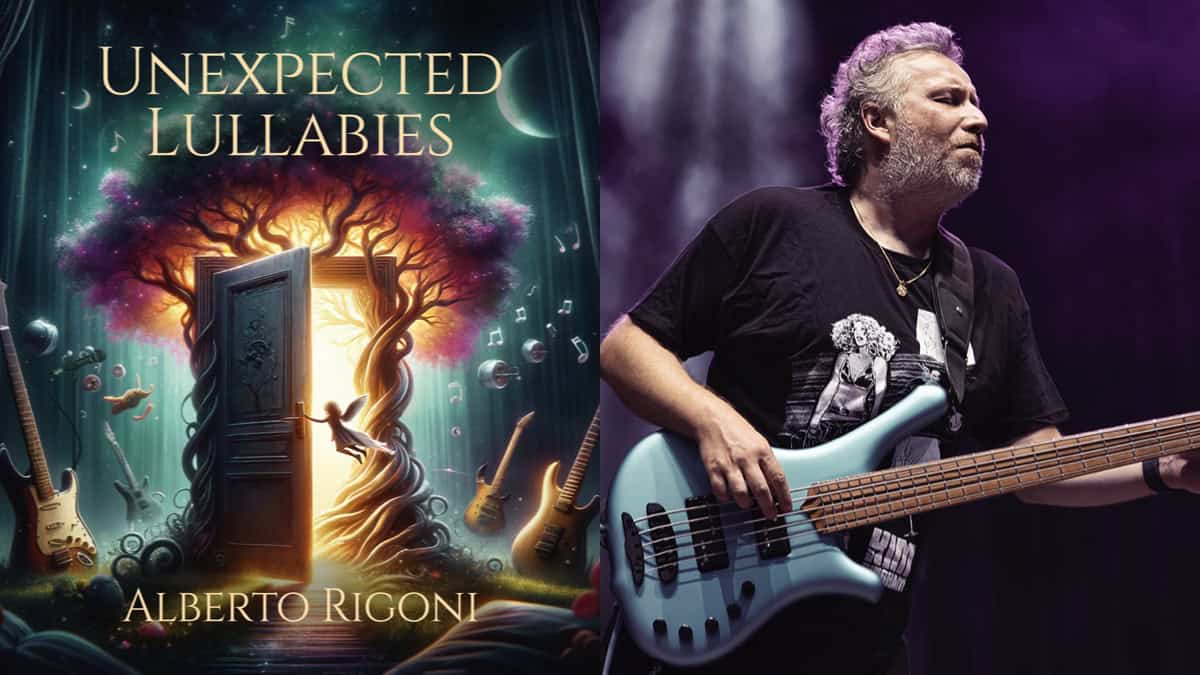
Readers have been fans of the composer, bass player, and Bass Musician contributor Alberto Rigoni for some time now.
In this interview, we had the opportunity to hear directly from Alberto about his love of music and a project near and dear to his heart, “Unexpected Lullabies”…
Could you tell our readers what makes your band different from other artists?
In 2005, I felt the urge to write original music. My first track was “Trying to Forget,” an instrumental piece with multiple bass layers (rhythm, solo, and arrangement), similar to the Twin Peaks soundtrack. When I played it for a few people, they really liked it, and I decided to continue composing based on my instinct and ear without adhering to any specific genre. In 2007, I released “Something Different” with Lion Music. The title says it all! Since then, I’ve released many solo albums, each different from the others, ranging from ambient to prog, fusion, jazz, and new age. I am very eclectic!
How did you get involved in this crazy world of music?
As a child, I listened to the music my parents enjoyed: my dad loved classical music, while my mom was into Pink Floyd, Genesis, Duran Duran, etc. These influences left a significant mark on my life. However, the turning point came at 15 when a drummer friend played me “A Change of Seasons” by Dream Theater, which was a shock! From that moment, I decided to play bass and cover Dream Theater songs, which I did for many years with my cover band, Ascra, until it disbanded in 2004. After that, I joined TwinSpirits (prog rock) led by multi-instrumentalist Daniele Liverani. Since then, I haven’t played any more covers!
Who are your musical inspirations, and what inspired the album and the songs?
My roots are in progressive rock metal, with influences from bands like Dream Theater, Symphony X, and many others. However, I listen to all genres and try to keep an open mind, which helps me compose original music. On bass, I was significantly inspired by Michael Manring and Randy Coven (bassist of Ark, Steve Vai, etc.). But I don’t have a real idol; I just follow my own path without compromise.
What are your interests outside of music?
Living in Italy, I love good food and wine! Beyond that, I have a deep interest in art in general and history, not just of my country. I enjoy spending time with friends, skiing, biking, and walking in nature. This is how I spend my free time. The rest of my time is devoted to music and my family!
Tell us about the new album.
It is definitely an out-of-the-box album. When I found out last year that I was going to have a baby girl, I decided to compose a sort of lullaby album, but I didn’t want to cover already famous lullabies. So, I started composing new tunes with the goal of creating an album that was half-sweet and half-hard rock. I did include some covers like “Strangers in the Night” by Frank Sinatra, sung by Goran Edman, former lead singer of Malmsteen. It’s not exactly a lullaby, but I felt the lyrics fit the album, as does the instrumental version of “Fly Me to The Moon.” There are also tracks with just bass and piano (Nenia) or two basses (Vicky). It was definitely an interesting creative process!
What is the difference between the new album and your previous releases, and will there be any new material from your other outfit called BAD AS?
BAD AS is essentially a metal band with several influences including prog. My solo genre is quite different, although there are some metal songs on a few albums. It’s always difficult for me to categorize my music… let’s say it’s a mix of prog, ambient, fusion, and new age.
Where was the album recorded, who produced it, and how long did the process take?
I produced my last album entirely by myself, including mixing and mastering. Unlike other albums I’ve produced within a few months, this one took much longer, perhaps because I was very busy or maybe because I wanted it to be perfect for my daughter, who is now three months old. In any case, I am satisfied. Once again, I did something different from my previous albums.
What is the highlight of the album for you and why?
My favorite song is the first track titled “Vittoria,” named after my daughter. It’s the intro to the record and isn’t very long, but the melody stuck in my head. Another standout track is the instrumental version of “Fly Me to The Moon” by Frank Sinatra, where I used fretless bass. The first part is sweet, the second part definitely rocks!
How are the live shows going, and what are you and the band hoping to achieve?
With BAD AS, this year we shared the stage with David Ellefson’s (former Megadeth bassist) band and talented young singer Dino Jelusik (White Snake). We plan to continue performing all over Europe!
What’s in store for the future?
I am working on an instrumental project called Nemesis Call, a progressive shred prog metal album with various influences. It will feature guest appearances from famous musicians like drummers Mike Terrana and Thomas Lang, as well as young talents like Japanese guitarist Keiji from Zero (19), 14-year-old Indian drummer Sajan Young, and guitarists Alexandra Zerner and Alexandra Lioness, Hellena Pandora. It’s scheduled for release at the end of the year or early 2025. As an independent artist, I have launched a fundraising campaign with exclusive pledges at www.albertorigoni.net/nemesiscall. And no, I am not begging; the album will be released anyway!
What formats is the release available in?
Unexpected Lullabies is available both as a Digipack CD and on streaming platforms.
What is the official album release date?
June 4th, 2024.
Thanks for this interview Bass Musician Magazine and for the continued support to my career!
Visit Online:
www.albertorigoni.net
www.youtube.com/albertorigoni
albertorigoni.bandcamp.com
www.instagram.com/albertorigonibassplayer
www.facebook.com/albertorigonimusic
www.tiktok.com/@albertorigonibassist
CD Track Listing:
1. Vittoria
2. Fly Me to the Moon
3. Azzurra
4. Dancing with Tears in My Eyes (feat. John Jeff Touch)
5. Out of Fear
6. Veni Laeatitia (feat. Alexandra Zerner)
7. Nenia
8. Slap Lullaby (feat. Karl Clews)
9. Saga
10. Vicky (feat. Michael Manring)
11. Ocean Travelers (feat. Vitalij Kuprij)
12. Strangers in the Night (feat. Göran Edman)
13. Peaceful
14. Un uomo che voga (feat. Eleonora Damiano)
Band Line-Up:
- Tommaso Ermolli arrangements on “Vittoria”
- Sefi Carmel on “Fly Me to the Moon” (Cover) (except for the keyboard solo by Alessandro Bertoni)
- Piano and keyboards by Alessandro Bertoni on “Azzurra”
- Leonardo Caverzan, guitars, and John Jeff Touch, vocals on “Dancing with Tears in my Eyes” (Cover)
- T. Ermolli keys on “Out of Fear”
- Alexandra Zerner everything on “Veni Laetitia”
- Daniele Bof piano on “Nenia”
- Karl Clews, piccolo bass on “Slap Lullaby”
- Jonas Erixon vocals and guitars on “Saga”
- Michael Manring bass on “Vicky”
- Vitalij Kuprij, keyboards and piano, and Josh Sapna, guitars, on “Ocean Traveler”
- Göran Edman, vocals, Emiliano Tessitore, guitars, Emiliano Bonini, drums, on “Strangers in the Night” (Cover) everything by Alberto Rigoni and vocals by Federica “Faith”
- Sciamanna on “Peaceful”
- T. Ermolli, guitars, and Eleonora Damiano, vocals, on “Un uomo che voga All drums programmed by Alberto Rigoni
Bass Books
Interview With Barker Bass’s Inventor and Writer Lee Barker
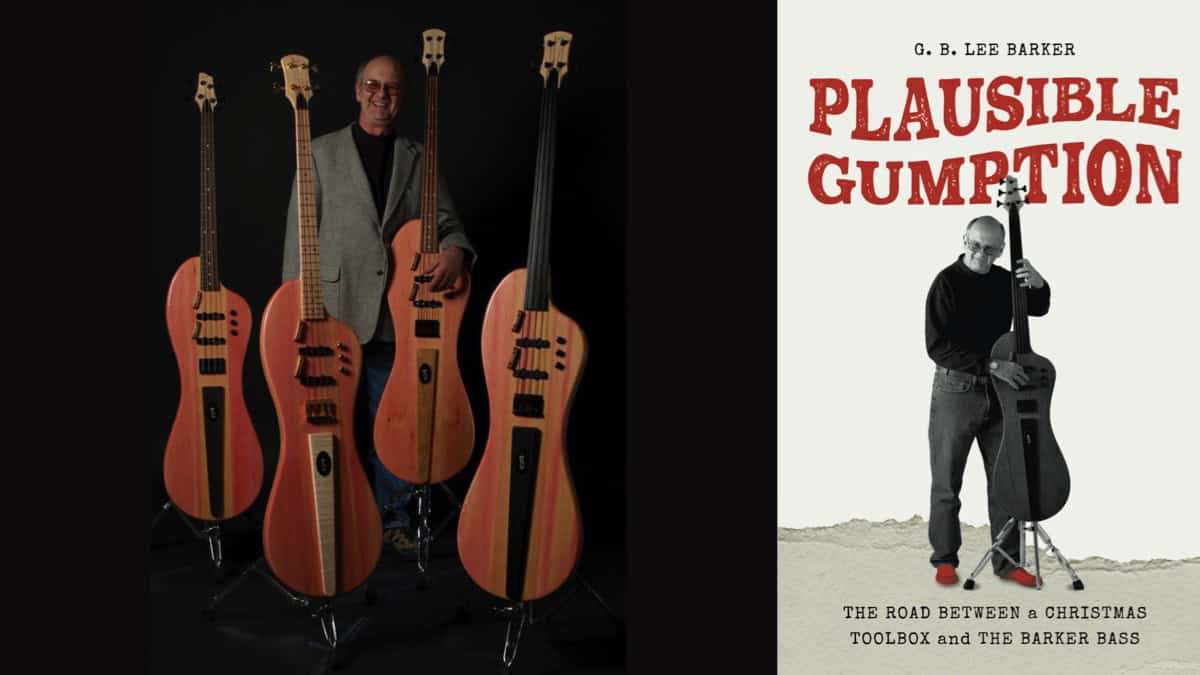
If you are an electric bass player, this is an exciting time to be alive as this relatively new instrument evolves around us. Some creative individuals have taken an active role in this evolution and made giant leaps in their own direction. Lee Barker is one of these inventive people having created the Barker Bass.
Fortunately, Lee is also an excellent writer (among so many talents) and has recently released his book “Plausible Gumption, The Road Between a Christmas Toolbox and The Barker Bass”. This book is a very fun read for everyone and shares a ton of details about Lee’s life in general, his experiences as a musician, a radio host, and a luthier. Now I am fortunate to have the great opportunity to gain even more insights into this renaissance man with this video interview.
Plausible Gumption, The Road Between a Christmas Toolbox and The Barker Bass is available online at Amazon.com
Features
Bergantino Welcomes Michael Byrnes to Their Family of Artists
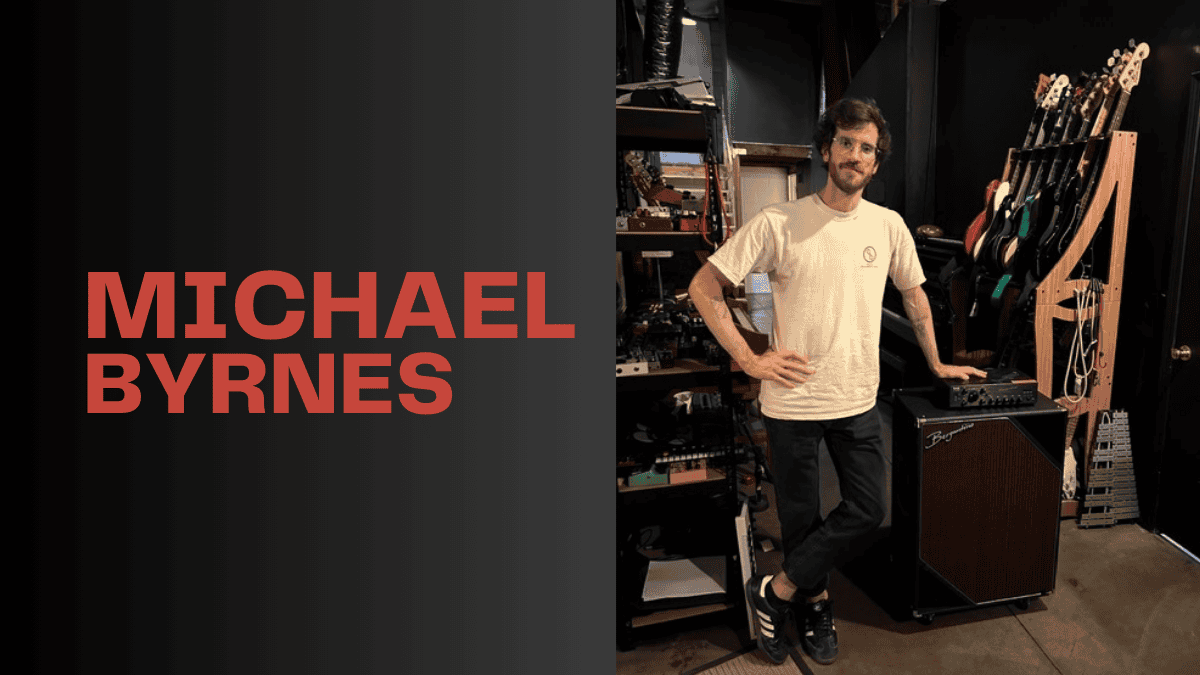
Interview and photo courtesy of Holly Bergantino of Bergantino Audio Systems
With an expansive live show and touring, Mt. Joy bassist Michael Byrnes shares his experiences with the joyful, high-energy band!
Michael Byrnes has kept quite a busy touring schedule for the past few years with his band, Mt. Joy. With a philosophy of trial and error, he’s developed quite the routines for touring, learning musical instruments, and finding the right sound. While on the road, we were fortunate to have him share his thoughts on his music, history, and path as a musician/composer.
Let’s start from the very beginning, like all good stories. What first drew
you to music as well as the bass?
My parents required my sister and I to play an instrument. I started on piano and really didn’t like it so when I wanted to quit my parents made me switch to another instrument and I chose drums. Then as I got older and started forming bands there were never any bass players. When I turned 17 I bought a bass and started getting lessons. I think with drums I loved music and I loved the idea of playing music but when I started playing bass I really got lost in it. I was completely hooked.
Can you tell us where you learned about music, singing, and composing?
A bit from teachers and school but honestly I learned the most from just going out and trying it. I still feel like most of the time I don’t know what I am doing but I do know that if I try things I will learn.
What other instruments do you play?
A bit of drums but that’s it. For composing I play a lot of things but I fake it till I make and what I can’t fake I will ask a friend!
I know you are also a composer for film and video. Can you share more
about this with us?
Pretty new to it at the moment. It is weirdly similar to the role of a bass player in the band. You are using music to emphasize and lift up the storyline. Which I feel I do with the bass in a band setting. Kind of putting my efforts into lifting the song and the other musicians on it.
Everybody loves talking about gear. How do you achieve your “fat” sound?
I just tinker till it’s fat lol. Right now solid-state amps have been helping me get there a little quicker than tube amps. That’s why I have been using the Bergantino Forté HP2 – Otherwise I have to say the cliche because it is true…. It’s in the hands.
Describe your playing style(s), tone, strengths and/or areas that you’d like
to explore on the bass.
I like to think of myself as a pretty catchy bass player. I need to ask my bandmates to confirm! But I think when improvising and writing bass parts I always am trying to sneak little earworms into the music. I want to explore 5-string more!
Who are your influences?
I can’t not mention James Jamerson. Where would any of us be if it wasn’t for him? A lesser-known bassist who had a huge effect on me is Ben Kenney. He is the second bassist in the band Incubus and his playing on the Crow Left the Murder album completely opened me up to the type of bass playing I aspire towards. When I first started playing I was really just listening to a lot of virtuosic bassists. I was loving that but I couldn’t see myself realistically playing like that. It wasn’t from a place of self-doubt I just deep down knew that wasn’t me. Ben has no problem shredding but I was struck by how much he would influence the song through smaller movements and reharmonizing underneath the band. His playing isn’t really in your face but from within the music, he could move mountains. That’s how I want to play.
What was the first bass you had? Do you still have it?
A MIM Fender Jazz and I do still have it. It’s in my studio as we speak. I rarely use it these days but I would never get rid of it.
(Every bass player’s favorite part of an interview and a read!) Tell us about
your favorite bass or basses. 🙂
I guess I would need to say that MIM Jazz bass even though I don’t play it much. I feel connected to that one. Otherwise, I have been playing lots of great amazing basses through the years. I have a Serek that I always have with me on the road (shout out Jake). Also have a 70’s Mustang that 8 times out of 10 times is what I use on recordings. Otherwise, I am always switching it up. I find that after a while the road I just cycle basses in and out. Even if I cycle out a P bass for another P bass.
What led you to Bergantino Audio Systems?
My friend and former roommate Edison is a monster bassist and he would gig with a cab of yours all the time years ago. Then when I was shopping for a solid state amp the Bergantino Forté HP2 kept popping up. Then I saw Justin Meldal Johnsen using it on tour with St. Vincent and I thought alright I’ll give it a try!
Can you share a little bit with us about your experience with the Bergantino
forte HP amplifier? I know you had this out on tour in 2023 and I am pretty
certain the forte HP has been to more countries than I have.
It has been great! I had been touring with a 70’s SVT which was great but from room to room, it was a little inconsistent. I really was picky with the type of power that we had on stage. After a while, I thought maybe it is time to just retire this to the studio. So I got that Forte because I had heard that it isn’t too far of a leap from a tube amp tone-wise. Plus I knew our crew would be much happier loading a small solid state amp over against the 60 lbs of SVT. It has sounded great and has really remained pretty much the same from night to night. Sometimes I catch myself hitting the bright switch depending on the room and occasionally I will use the drive on it.
You have recently added the new Berg NXT410-C speaker cabinet to your
arsenal. Thoughts so far?
It has sounded great in the studio. I haven’t gotten a chance to take it on the road with us but I am excited to put it through the paces!
You have been touring like a madman all over the world for the past few
years. Any touring advice for other musicians/bass players? And can I go to Dublin, Ireland with you all??
Exercise! That’s probably the number one thing I can say. Exercise is what keeps me sane on the road and helps me regulate the ups and downs of it. Please come to Dublin! I can put you on the guest list!
It’s a cool story on how the Mt. Joy band has grown so quickly! Tell us
more about Mt. Joy, how it started, where the name comes from, who the
members are and a little bit about this great group?
Our singer and guitarist knew each other in high school and have made music together off and on since. Once they both found themselves living in LA they decided to record a couple songs and put out a Craigslist ad looking for a bassist. At the time I had just moved to LA and was looking for anyone to play with. We linked up and we recorded what would become the first Mt. Joy songs in my house with my friend Caleb producing. Caleb has since produced our third album and is working on our fourth with us now. Once those songs came out we needed to form a full band to be able to do live shows. I knew our drummer from gigging around LA and a mutual friend of all of us recommended Jackie. From then on we’ve been on the road and in the studio. Even through Covid.
Describe the music style of Mt. Joy for me.
Folk Rock with Jam influences
What are your favorite songs to perform?
Always changing but right now it is ‘Let Loose’
What else do you love to do besides bass?
Exercise!
I always throw in a question about food. What is your favorite food?
I love a good chocolate croissant.
Follow Michael Byrnes:
Instagram: @mikeyblaster
Follow Mt. Joy Band:
Instagram: https://www.instagram.com/mtjoyband
Facebook: https://www.facebook.com/mtjoyband
Bass Videos
Artist Update With Mark Egan, Cross Currents
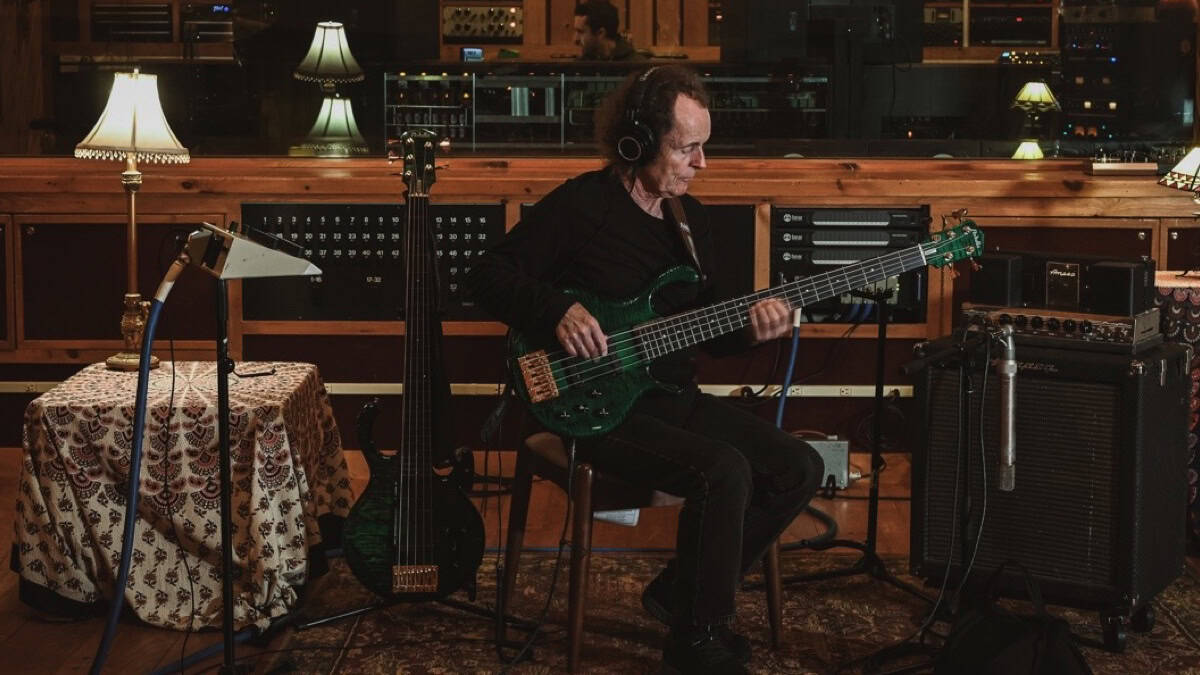
I am sure many of you are very familiar with Mark Egan as we have been following him and his music for many years now. The last time we chatted was in 2020.
Mark teamed up with drummer Shawn Pelton and guitarist Shane Theriot to produce a new album, “Cross Currents” released on March 8th, 2024. I have been listening to this album in its entirety and it is simply superb (See my review).
Now, I am excited to hear about this project from Mark himself and share this conversation with our bass community in Bass Musician Magazine.
Photo courtesy of Mark Egan
Visit Online:
markegan.com
markegan.bandcamp.com
Apple Music
Amazon Music
Bass Videos
Interview With By the Thousands Bassist Adam Sullivan
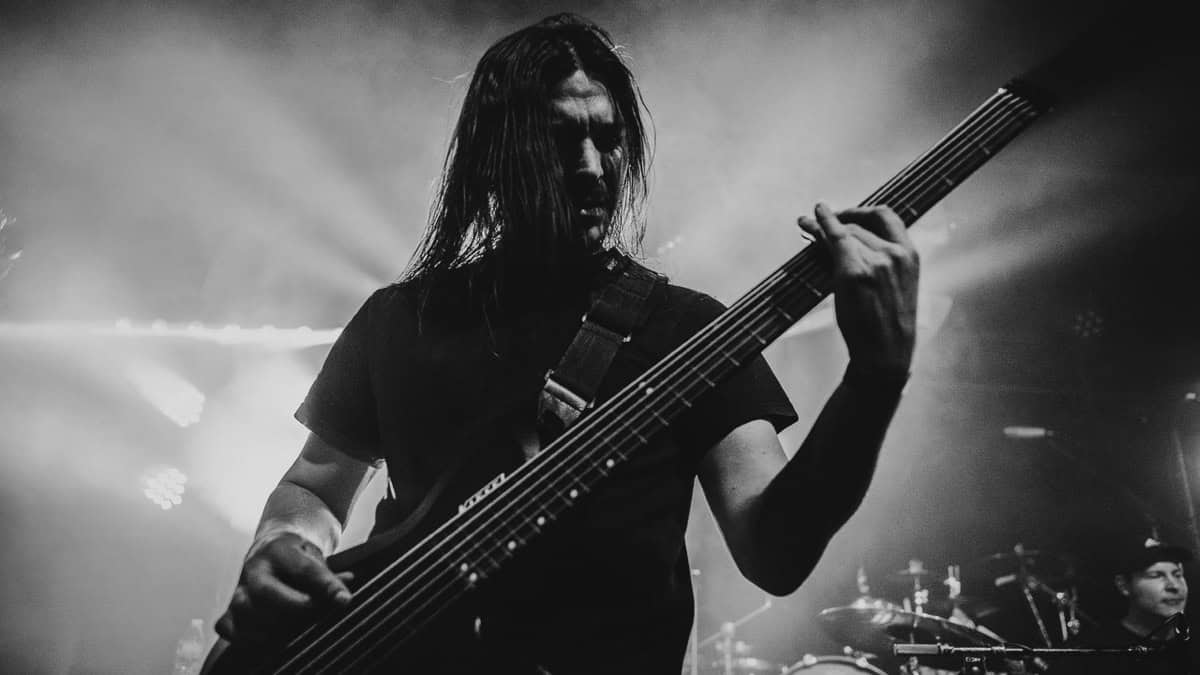
Bassist Adam Sullivan…
Hailing from Minnesota since 2012, By the Thousands has produced some serious Technical Metal/Deathcore music. Following their recent EP “The Decent”s release, I have the great opportunity to chat with bassist Adam Sullivan.
Join me as we hear about Adam’s musical Journey, his Influences, how he gets his sound, and the band’s plans for the future
Photo, Laura Baker
Featured Videos:
Follow On Social
IG &FB @bythethousands
YTB @BytheThousands










